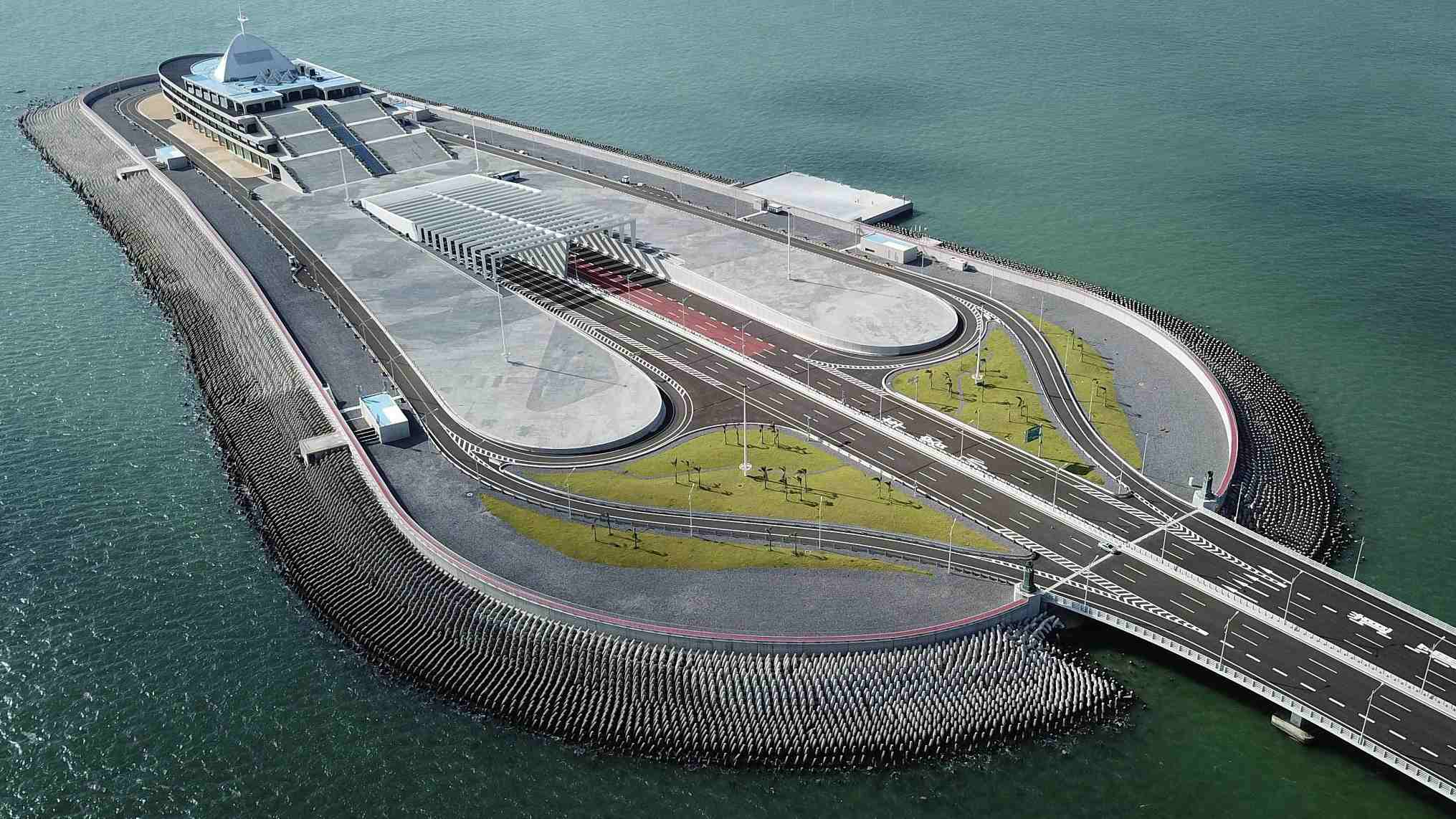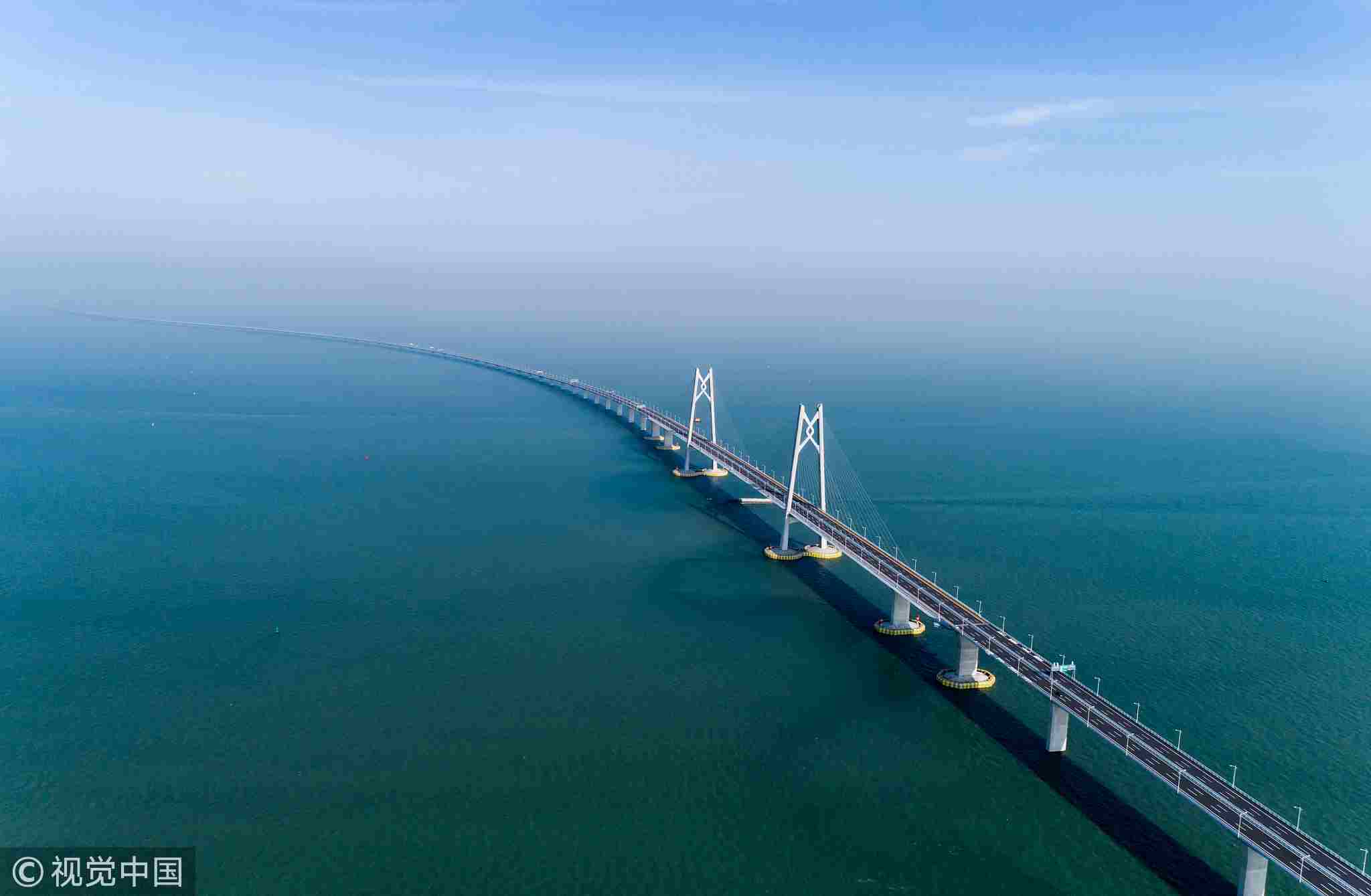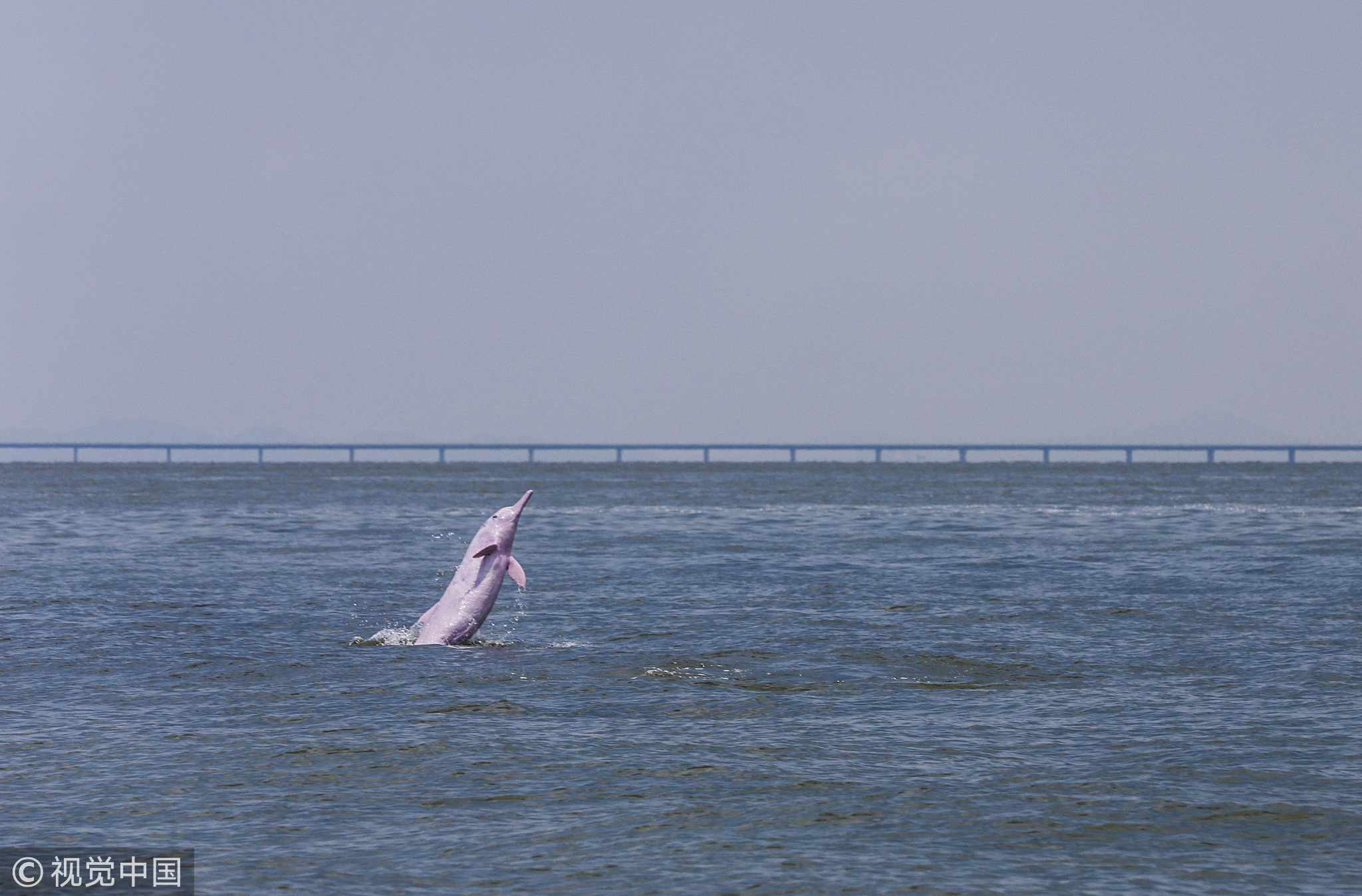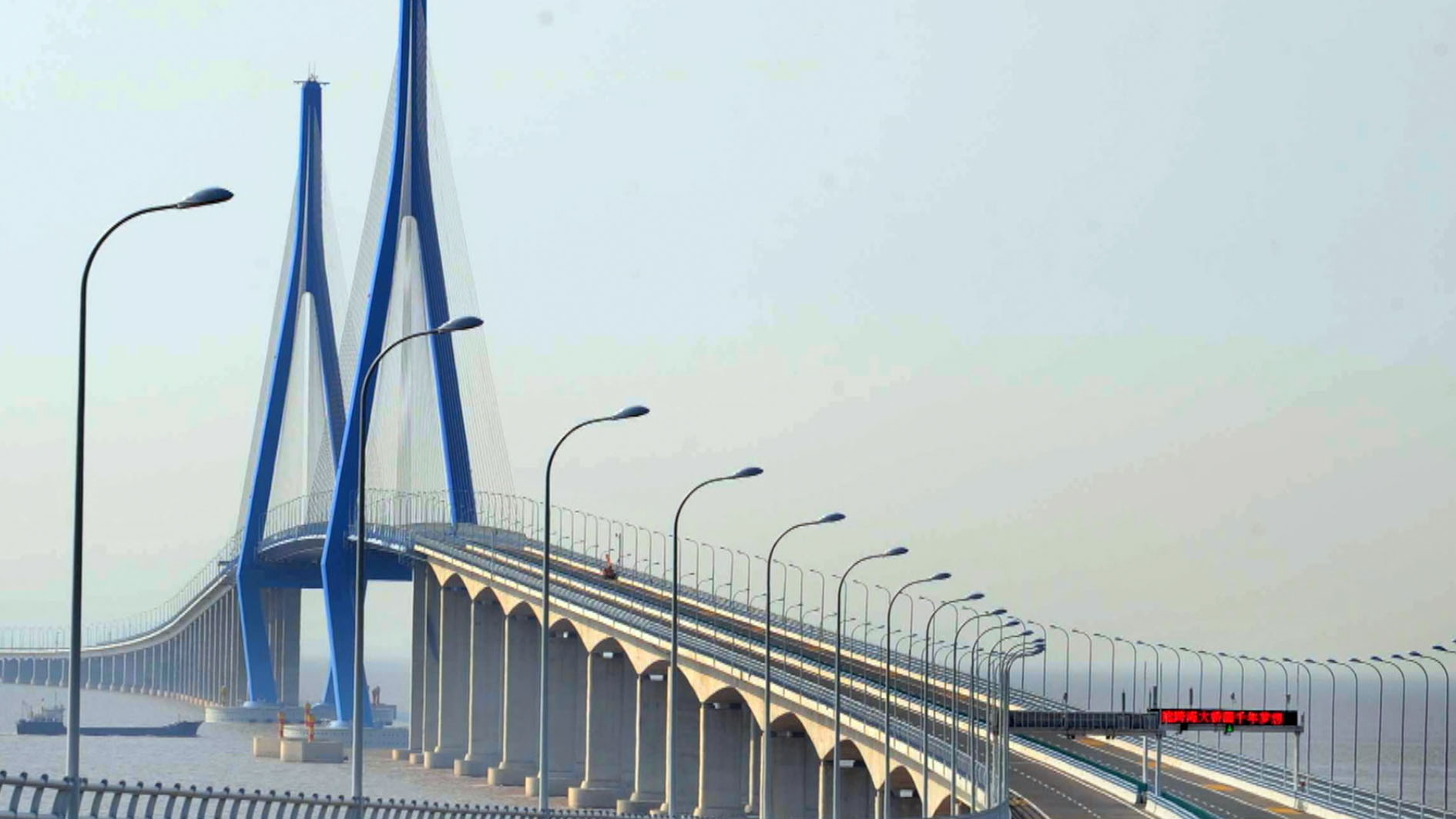
China
12:35, 21-Oct-2018
Hong Kong-Zhuhai-Macao Bridge to be sustainable and promote integration
Updated
12:14, 24-Oct-2018
CGTN
00:55

Construction on the Hong Kong-Zhuhai-Macao Bridge (HZMB), a 55-kilometer-long bridge-island-tunnel complex situated in the Lingdingyang waters of the Pearl River Estuary in southern China, began on December 15, 2009.
And now, the bridge, which was described by The Guardian as one of the "seven wonders in the modern world," is set to open for vehicles next Wednesday.
Lauded as the world's longest sea-based project, the complex also includes a 6.7km undersea tunnel, which connects to the bridge via two artificial islands.

A bird's-eye view of the Hong Kong-Zhuhai-Macao Bridge. /VCG Photo
A bird's-eye view of the Hong Kong-Zhuhai-Macao Bridge. /VCG Photo
It took nearly eight years and about 120 billion yuan (17.3 billion US dollars) to complete the mega project.
The expenditure was reportedly shared in different proportions by the Hong Kong, Zhuhai and Macao governments, in accordance with an assessment of prospective economic benefits for the three cities.
Rome was not built in a day
The idea of building a bridge spanning the Lingdingyang waters was put forward by a Hong Kong tycoon named Hu Yingxiang as early as 1983 in a bid to connect Hong Kong and Zhuhai and boost economic ties. But the idea did not get enough attention at the time.
A big breakthrough came as Hong Kong entered the Asian Financial Crisis at the end of the 1990s. Hong Kong thought it necessary to build a bridge linking Hong Kong, Macao and Zhuhai to seek new economic growth opportunities.
Through years of negotiations and preparation, the State Council approved the feasibility study report of the HZMB on October 28, 2009.
Since the super project links two special administrative regions and a mainland city, it also faced difficulties in finding solutions to problems such as customs, immigration clearance and different traffic rules and license plates.
Besides these challenges, it is worth noting that the project highlighted sustainability through its construction.
It is designed to have a service life of 120 years, which is 20 years longer than the common service life of bridges built in the Chinese mainland.

A section of the HZMB in Zhuhai, south China's Guangdong Province, March 28, 2018. /VCG Photo
A section of the HZMB in Zhuhai, south China's Guangdong Province, March 28, 2018. /VCG Photo
The main structure of the project uses the most endurable construction materials in the world, said chief designer Meng Fanchao, who pointed out that the bridge saw no damage when Super Typhoon Mangkhut hit southern China last month.
The other noticeable thing is that the authorities in charge of the bridge construction limited the number of workers and equipment operating in the sea where rare Chinese white dolphins live, in a bid to do less harm to the animals.
“Since the construction began in the end of 2009, the number of the Chinese white dolphins has increased from 1,400 in 2009 to 2,100 in 2016,” said Yu Lie, deputy head of the HZMB authority.

A Chinese white dolphin jumps out of the water beside the HZMB. /VCG Photo
A Chinese white dolphin jumps out of the water beside the HZMB. /VCG Photo
Meng said this progress has something to do with the two artificial islands, which gather plankton, which the rare animals eat as the core of their diet.
Next Wednesday the super project will celebrate its official opening to traffic.
Meng said he felt like a proud parent whose child will soon shoulder immense responsibilities, serve society and stand the test of real-life challenges.
00:56

The mega project is reported to put the three cities within an hour's drive of each other. For example, it cuts the travel time between Hong Kong and Zhuhai from three hours to 30 minutes, which is expected to boost economic development and tourism in Hong Kong.
Besides, the super bridge marks a milestone in developing the Greater Bay Area, which boasts a technology-led economic hub comprised of Hong Kong, Macao and nine Guangdong Province cities including Guangzhou, Shenzhen and Zhuhai with aspirations to rival California's Silicon Valley.
Lo Wai-Kwok, chairman of the Business and Professionals Alliance for Hong Kong, predicted the bridge's opening will boost economic development in the Greater Bay Area, facilitating the flow of people, goods, capital and services in the region.
(Cover photo: One of the two man-made islands serving to connect the Hong Kong-Zhuhai-Macao Bridge /VCG Photo)

SITEMAP
Copyright © 2018 CGTN. Beijing ICP prepared NO.16065310-3
Copyright © 2018 CGTN. Beijing ICP prepared NO.16065310-3